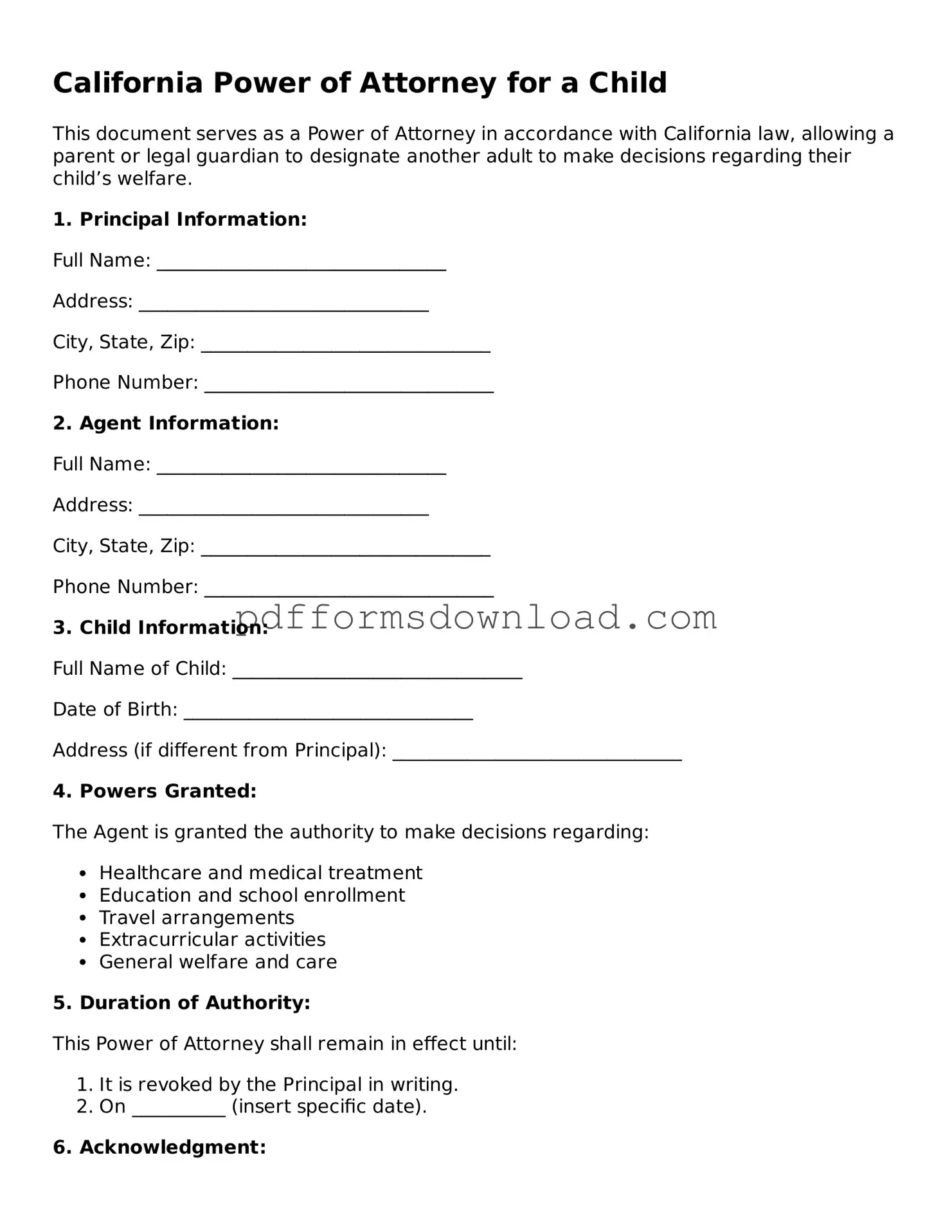What is a California Power of Attorney for a Child?
The California Power of Attorney for a Child is a legal document that allows a parent or legal guardian to appoint another adult to make decisions on behalf of their child. This can include decisions related to education, healthcare, and general welfare. It's particularly useful when parents are unavailable due to travel, work, or other commitments.
Who can be appointed as an agent in this form?
Any responsible adult can be appointed as an agent, as long as they are willing and able to take on the responsibilities. This could be a relative, family friend, or trusted neighbor. It's important to choose someone who understands your child's needs and can act in their best interest.
How long is the Power of Attorney for a Child valid?
The duration of the Power of Attorney can vary based on what is specified in the document. Generally, it remains valid until the parent or guardian revokes it, or until the child reaches the age of 18. However, it’s wise to include a specific end date if you anticipate needing it for a limited time.
Do I need to have the Power of Attorney for a Child notarized?
Yes, the document must be notarized to be legally binding. This means you will need to sign it in front of a notary public, who will then verify your identity and witness the signing. This step adds an extra layer of legitimacy to the document.
Can I revoke the Power of Attorney for a Child once it's been created?
Absolutely. You can revoke the Power of Attorney at any time, as long as you are of sound mind. To do this, you should create a written revocation and notify the appointed agent and any relevant parties, such as schools or healthcare providers, to ensure they are aware of the change.
What if the agent cannot fulfill their duties?
If the appointed agent is unable to fulfill their duties due to illness, relocation, or any other reason, you may want to appoint an alternative agent. It’s a good idea to include a backup in the document itself, or you can create a new Power of Attorney if necessary.
Are there any limitations on the authority of the agent?
Yes, you can specify limitations within the Power of Attorney document. For example, you might want to restrict the agent from making certain medical decisions or from enrolling your child in a new school without your consent. Clear communication of your expectations will help avoid misunderstandings.
Is the Power of Attorney for a Child the same as guardianship?
No, a Power of Attorney is not the same as guardianship. Guardianship is a more permanent legal arrangement that grants someone the right to make decisions for a child over a longer period. In contrast, a Power of Attorney is typically temporary and can be revoked at any time.
Where can I obtain a California Power of Attorney for a Child form?
You can obtain the form from various sources, including legal aid organizations, online legal service providers, or your local court. It's essential to ensure that you are using the most current version of the form to comply with California laws.
